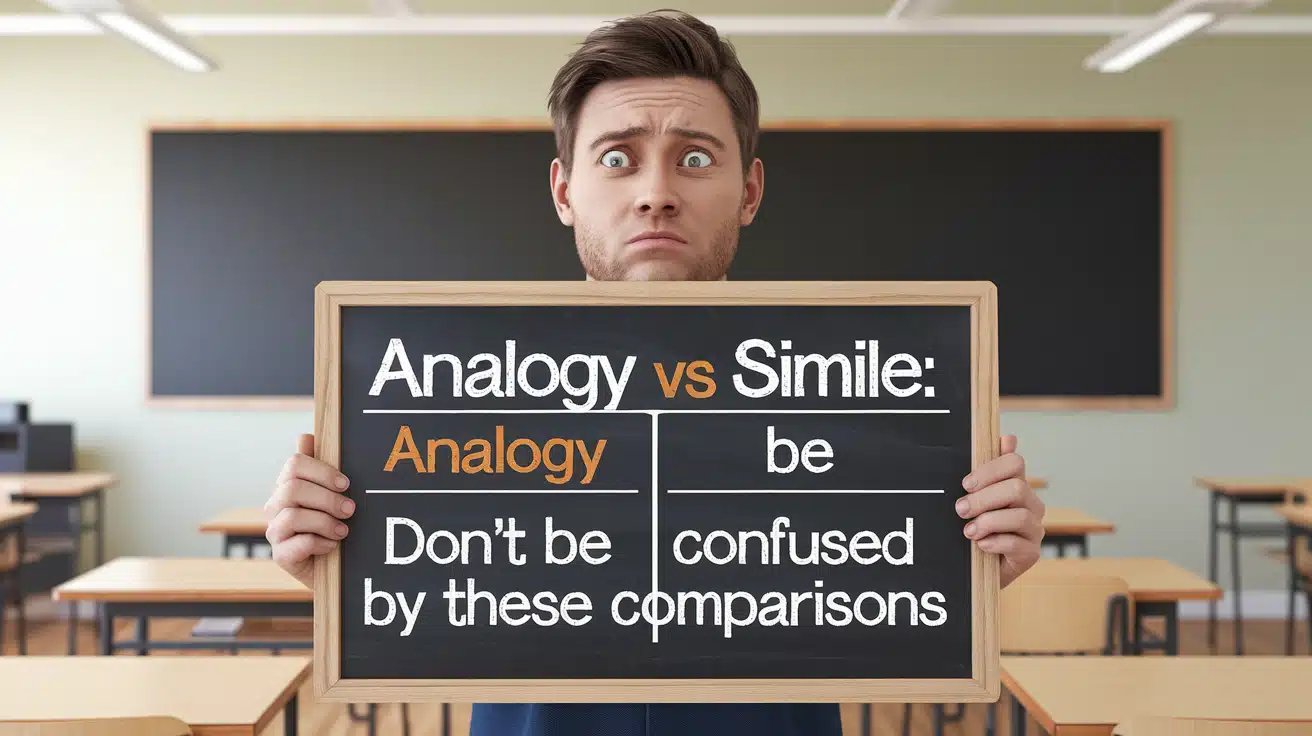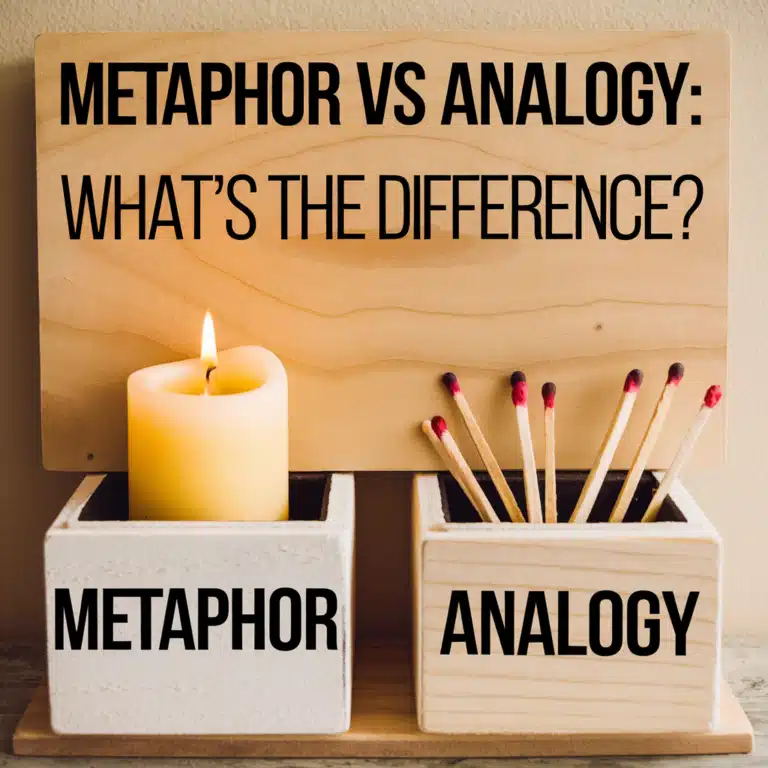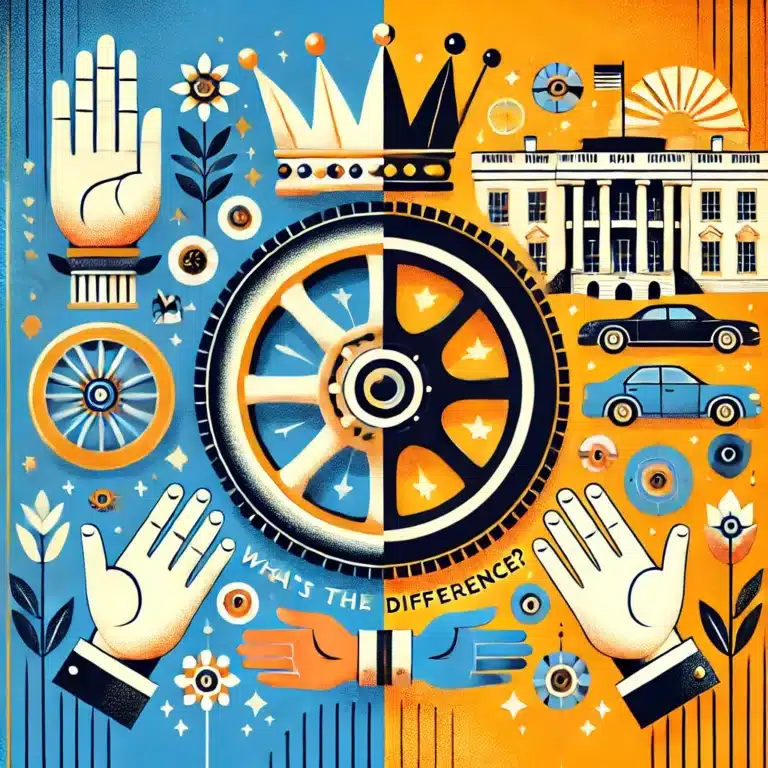Analogy vs Simile: Don’t Be Confused by These Comparisons
When it comes to expressing ideas with clarity and creativity, both analogies and similes are invaluable tools. While they seem similar at a glance, each serves a distinct purpose in communication. Similes help paint vivid images by directly comparing one thing to another using words like “as” or “like.” In contrast, analogies dive deeper, drawing parallels between two concepts to explain complex ideas in simpler terms.
This guide will explore the key differences between analogies and similes, their origins, examples, and tips on choosing the right one to strengthen your writing. By understanding each tool’s unique role, you’ll be better equipped to bring your ideas to life and leave a lasting impression on your readers.
What’s an Analogy
An analogy is a literary device used to draw comparisons between two different things to clarify a concept or idea. It goes beyond simple comparison, aiming to explain something unfamiliar by relating it to something well-known. Unlike similes or metaphors, which focus on specific similarities, analogies are often more detailed and can involve entire ideas or processes, making complex topics easier to understand. For instance, comparing the structure of an atom to a solar system helps explain its parts by aligning them with something more familiar.
Examples of Analogy
Analogies appear everywhere in language and can make explanations more engaging and relatable. Here are a few examples:
- Life is like a box of chocolates; you never know what you’re going to get.
This analogy likens life’s unpredictability to the random selection in a box of chocolates. - Finding a good friend is like finding a needle in a haystack.
This emphasizes the rarity and value of true friendships by comparing them to the challenging search for a needle in a pile of hay. - A company’s structure is like a tree: the roots support, the trunk stabilizes, and the branches reach out.
This analogy makes the roles within an organization clear by comparing them to the parts of a tree.
Origins of Analogy
The concept of analogy dates back to ancient philosophy and rhetoric. Greek philosophers like Aristotle and Plato used analogies to explore abstract ideas and clarify complex concepts. Aristotle, in particular, developed a formal approach to analogical reasoning, using it to explain relationships between ideas and categorize knowledge. Analogies have since become a mainstay in literature, education, and science, offering a bridge between unfamiliar ideas and everyday understanding. Through the centuries, analogies have helped people grasp difficult concepts by linking them to something familiar and accessible, reinforcing their place as a powerful tool in communication and learning.
Read More About : Motif vs Theme: Clarifying the Confusion
What’s a Simile
A simile is a figure of speech that directly compares two different things using the words “like” or “as.” Similes create vivid imagery, helping readers or listeners understand an idea by relating it to something familiar. Unlike analogies, which may explain complex concepts, similes focus on a single characteristic or quality to make a description more relatable and engaging. For example, saying “Her smile was as bright as the sun” instantly gives the listener a clear mental image, making the description come alive.
Examples of Simile
Similes are common in everyday language, literature, and music, bringing descriptions to life. Here are a few examples:
- He was as brave as a lion.
This simile conveys someone’s courage by comparing them to a lion, an animal commonly associated with bravery. - Her voice was like velvet.
Here, the smoothness and softness of her voice are highlighted by comparing it to velvet. - The water sparkled like diamonds.
This simile emphasizes the sparkle and clarity of the water by likening it to precious diamonds.
Origins of Simile
Similes have been used since ancient times, with roots tracing back to early literature and oral storytelling. Classical writers like Homer often used similes in epic poetry, such as in The Iliad, where warriors are compared to lions or storms to depict their strength and ferocity. In ancient Greek and Latin texts, similes were instrumental in adding depth and emotion to narratives, a practice that has carried on through the centuries. Today, similes remain a popular tool in all forms of writing, connecting complex emotions or scenes to easily recognized images, making language more engaging and expressive.
Analogy vs Simile: The Differences
Analogy and simile are both valuable tools in language that help clarify ideas and enhance understanding, but they serve different purposes. An analogy is a more extensive comparison between two different things, illustrating how they are alike in certain aspects. It often explains a complex idea by relating it to something more familiar, helping the audience grasp the concept better. For example, comparing the workings of the brain to a computer highlights how both process information.
On the other hand, a simile is a brief comparison that uses “like” or “as” to connect two different things based on a shared quality. For instance, saying, “His heart is like a stone” emphasizes emotional coldness without delving into a broader explanation.
In summary, while both analogies and similes draw comparisons, analogies provide deeper insights and explanations, whereas similes focus on creating vivid imagery with concise, relatable expressions. Understanding these differences can enhance your writing and communication skills, allowing you to choose the right tool for your message.
Choosing the Right Tool: When to Use Analogy or Simile
When crafting your writing, choosing between an analogy and a simile can significantly impact your message’s clarity and effectiveness. Understanding the context in which each tool shines is essential for effective communication.
Use a simile when you want to create a vivid image or evoke strong emotions in your readers. Similes are concise and straightforward, making them perfect for adding flair to descriptions. For example, saying, “The sky was as blue as the ocean” instantly conjures a clear picture in the reader’s mind.
In contrast, opt for an analogy when you aim to explain complex concepts or draw deeper connections. Analogies can help clarify ideas that may be unfamiliar to your audience, as they relate new information to something they already understand. For instance, comparing the internet to a vast library can illuminate the vastness of information available online.
Ultimately, the choice between analogy and simile depends on your intent: use similes for imagery and emotional resonance, and employ analogies for deeper understanding and explanation. By selecting the right tool, you enhance your writing’s impact and ensure your message resonates with your audience.
Conclusion
Understanding the difference between analogy and simile is essential for effective communication. Both tools enhance writing by making complex ideas clearer and more relatable. While analogies explain relationships between different concepts, similes create vivid images through direct comparisons.
By using these devices correctly, writers can engage their readers and make their points more memorable. So, whether you choose to draw a parallel or paint a picture with words, both analogies and similes can elevate your writing to new heights. Embrace these comparisons to strengthen your message.







